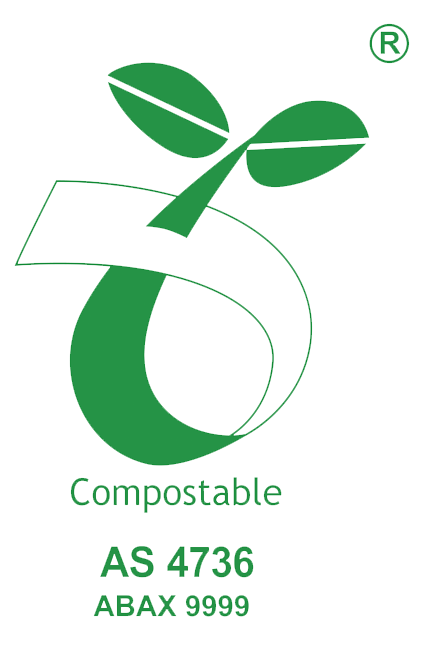Using your green organics bin
Always in the green bin
All food scraps, raw and uncooked

All food scraps, including citrus, onion, dairy, meat, bones, fish, fruit and vegetables, should be recycled through your green organics bin (or home composting system).
When you put food scraps into your green bin, they’re taken to a commercial composting facility to be processed and made into valuable compost, soil and mulch products, which are then used on South Australian farms and vineyards, and in household gardens as well.
Bread, pasta and rice
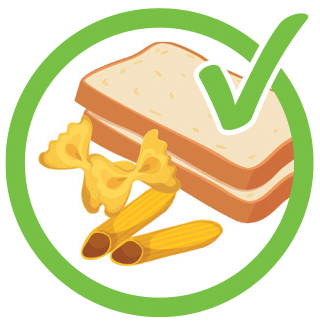
Unwanted bread, pasta and rice can be placed in your green organics bin for recycling – but make sure you remove all packaging first (unless it’s compostable). That includes things like plastic packets, bags and containers, and glass jars.
Meat, bones and seafood
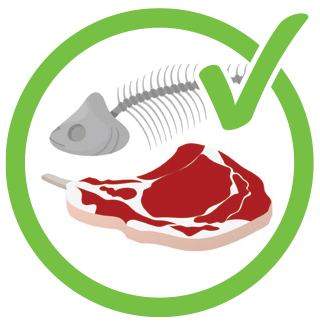
Meat, bones and seafood – raw or cooked – are good to go in your green organics bin.
Once collected, your green bin materials are taken to a commercial composting facility to be processed and made into valuable compost, soil and mulch products.
If you’re worried about the smell, you can leave the items in your fridge or freezer, and place them in your green bin just before you wheel it out for collection.
Certified compostable products
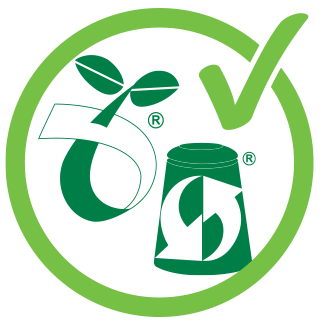
Certified compostable plastic products can be placed in your green organics bin.
These products are made from compostable bioplastic, and will be marked with AS 4736 the seedling logo for easy identification:
Similarly, products marked with the AS 5810 home composting logo meet the standards for home composting, but can also be placed in your green organics bin.
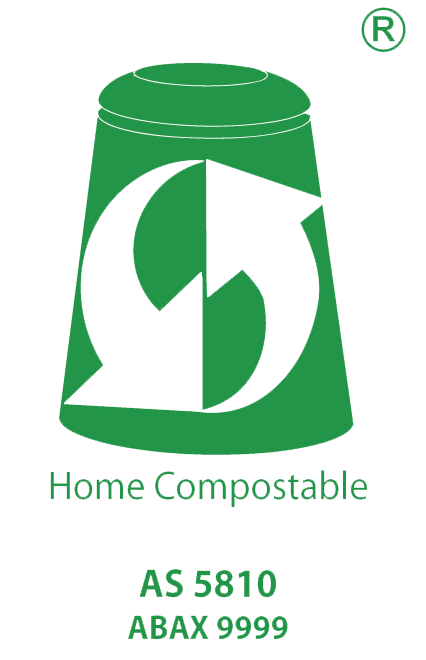
Compostable food containers and cutlery
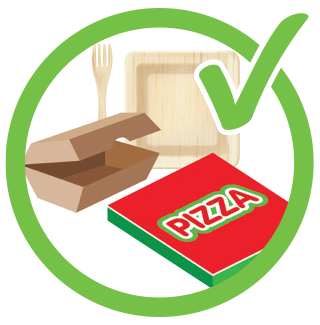
Compostable food containers and cutlery are good to go in your green organics bin.
This includes:
- pizza boxes
- paper bags – the kind that sausage rolls and donuts from the bakery come in
- cardboard burger boxes
- cardboard clam shells
- paper towel, napkins and tissues
- bamboo plates, clam shells and cutlery
- corn-starch products.
Tea bags and coffee grounds
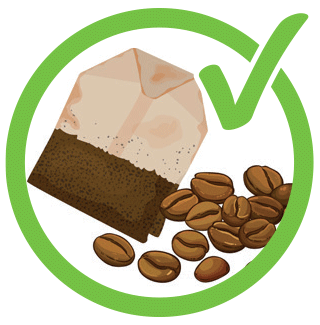
Coffee grounds, tea bags and loose tea leaves can go into your green bin, or your home compost bin.
Coffee grounds contain nitrogen, potassium and phosphorous, as well as other micronutrients, and work as a slow-release fertilizer, and tea leaves are full of nutrients and tannins that help plants grow.
Paper tea bags are also great for composting but be aware that some tea bags do contain plastic. These bags will have a glossy sheen and slippery feel and should be placed in your red/blue landfill bin.
Leaves, flowers and shredded paper
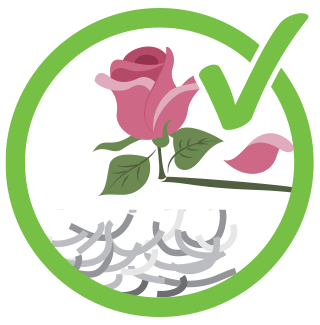
Leaves, flowers and anything else that grows in your garden are good to go in your green organics bin.
Shredded paper, and other small pieces of paper, like sticky notes, are also good for your green bin.
Paper provides a great source of carbon, which is an important component of compost.
It’s best to secure these materials in a paper or certified compostable bag, so they don’t make a mess when your bin is collected or at the composting facility.
Never in the green bin
No soft plastics or plastic bags
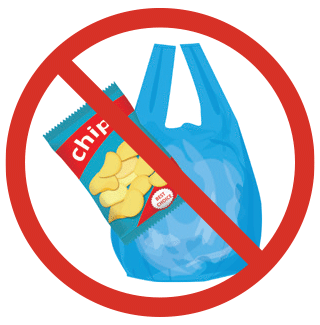
Soft plastics should only be placed in your red/blue landfill bin, never in your green organics bin.
If a bag is certified compostable, that is, it has the AS-4736 Australian Standard 'seedling' logo printed on it, then it is safe to go in your green organics bin, as these bags are designed to break down in a commercial composting facility.
No plastic food packaging
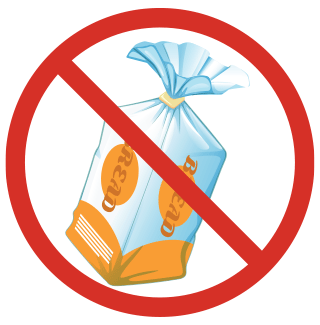
Plastic food packaging, like bread bags, packets and containers must be removed before you place any food items in your green organics bin for recycling.
Any soft plastics should be placed in your red/blue landfill bin, while rigid plastic containers and glass bottles and jars can be rinsed out and placed in your yellow recycling bin.
No polystyrene or foam
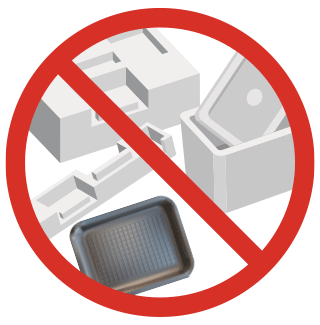
Expanded polystyrene, also known as Styrofoam, can’t be recycled through your yellow bin.
White, rigid packaging foam can be recycled by taking it to your nearest drop-off point.
Foam meat trays and similar items must be placed in your red/blue landfill bin.
No fabric, clothing or footwear

Clothing, footwear and fabric items, including towels, sheets, quilts and pillows, cannot be placed in your green organics bin.
This includes items made from wool, cotton and leather.
Any functioning or wearable items can be donated or sold, and any items that are unusable should be placed in your red/blue landfill bin.
No plastic pots, containers or bottles
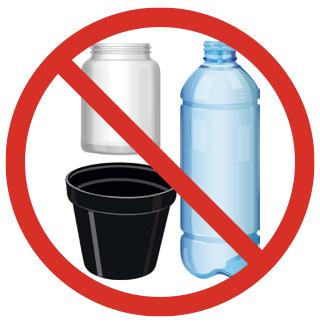
Rigid plastic pots, containers and bottles can all be placed in your yellow recycling bin.
Before you put them in the bin, remove the lids, empty any food contents into your green bin, and give them a quick rinse.
Any bottles with a 10c refund can be exchanged for cash by dropping them off at your nearest depot.
No nappies
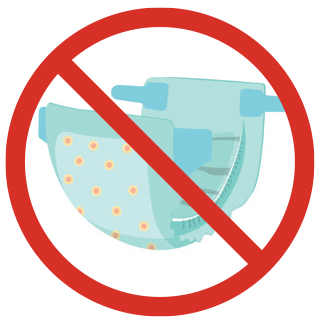
Nappies, clean or dirty, must always be placed in your red/blue landfill bin.
In South Australia, there are currently no known brands of compostable nappy that can completely break down in a commercial composting system. This is because the plastic elements, such as liners, tabs, and elastic, that remain as residue after processing equate to more than 10% of the product, which is above the acceptable contamination rate.
No building materials, dirt or rocks
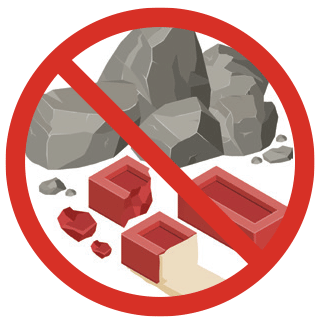
Building materials, dirt or rocks cannot be placed in your green organics bin.
In some cases, building materials, like bricks, tiles, cement and wire, can be recycled by taking them to your nearest transfer station for processing and recycling.
If you're undertaking a home or backyard rennovation, hire a skip to dispose of large amounts of building waste.
No batteries
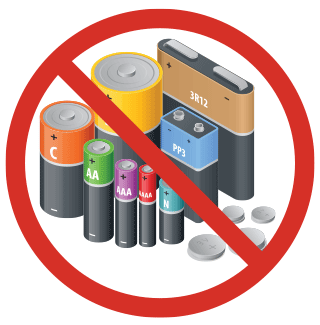
Batteries can’t go in your green or yellow bin, but they can be recycled by taking them to a free drop-off point.
Find your nearest drop-off point.
Batteries incorrectly placed in your green bin have the potential to cause a fire in the waste truck once collected, so it’s very important to dispose of them responsibly.

